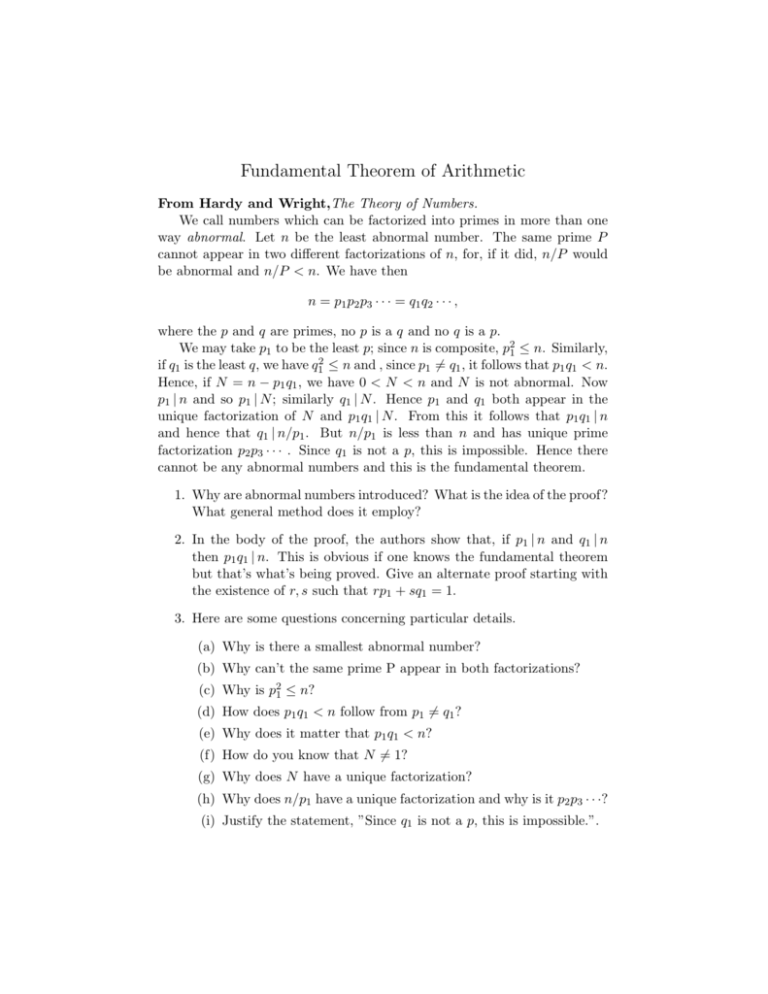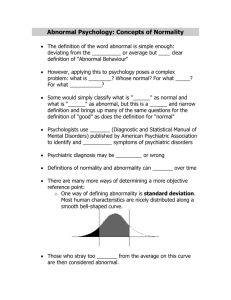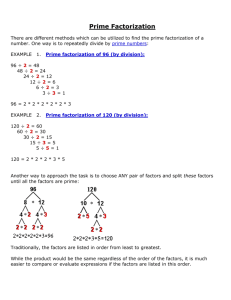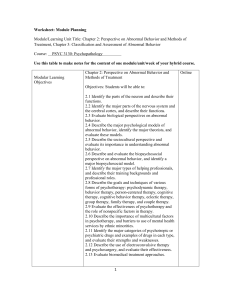Alternate Proof of Fundamental Theorem with Study Questions
advertisement

Fundamental Theorem of Arithmetic From Hardy and Wright,The Theory of Numbers. We call numbers which can be factorized into primes in more than one way abnormal. Let n be the least abnormal number. The same prime P cannot appear in two different factorizations of n, for, if it did, n/P would be abnormal and n/P < n. We have then n = p 1 p 2 p 3 · · · = q1 q2 · · · , where the p and q are primes, no p is a q and no q is a p. We may take p1 to be the least p; since n is composite, p21 ≤ n. Similarly, if q1 is the least q, we have q12 ≤ n and , since p1 6= q1 , it follows that p1 q1 < n. Hence, if N = n − p1 q1 , we have 0 < N < n and N is not abnormal. Now p1 | n and so p1 | N ; similarly q1 | N . Hence p1 and q1 both appear in the unique factorization of N and p1 q1 | N . From this it follows that p1 q1 | n and hence that q1 | n/p1 . But n/p1 is less than n and has unique prime factorization p2 p3 · · · . Since q1 is not a p, this is impossible. Hence there cannot be any abnormal numbers and this is the fundamental theorem. 1. Why are abnormal numbers introduced? What is the idea of the proof? What general method does it employ? 2. In the body of the proof, the authors show that, if p1 | n and q1 | n then p1 q1 | n. This is obvious if one knows the fundamental theorem but that’s what’s being proved. Give an alternate proof starting with the existence of r, s such that rp1 + sq1 = 1. 3. Here are some questions concerning particular details. (a) Why is there a smallest abnormal number? (b) Why can’t the same prime P appear in both factorizations? (c) Why is p21 ≤ n? (d) How does p1 q1 < n follow from p1 6= q1 ? (e) Why does it matter that p1 q1 < n? (f) How do you know that N 6= 1? (g) Why does N have a unique factorization? (h) Why does n/p1 have a unique factorization and why is it p2 p3 · · ·? (i) Justify the statement, ”Since q1 is not a p, this is impossible.”.











